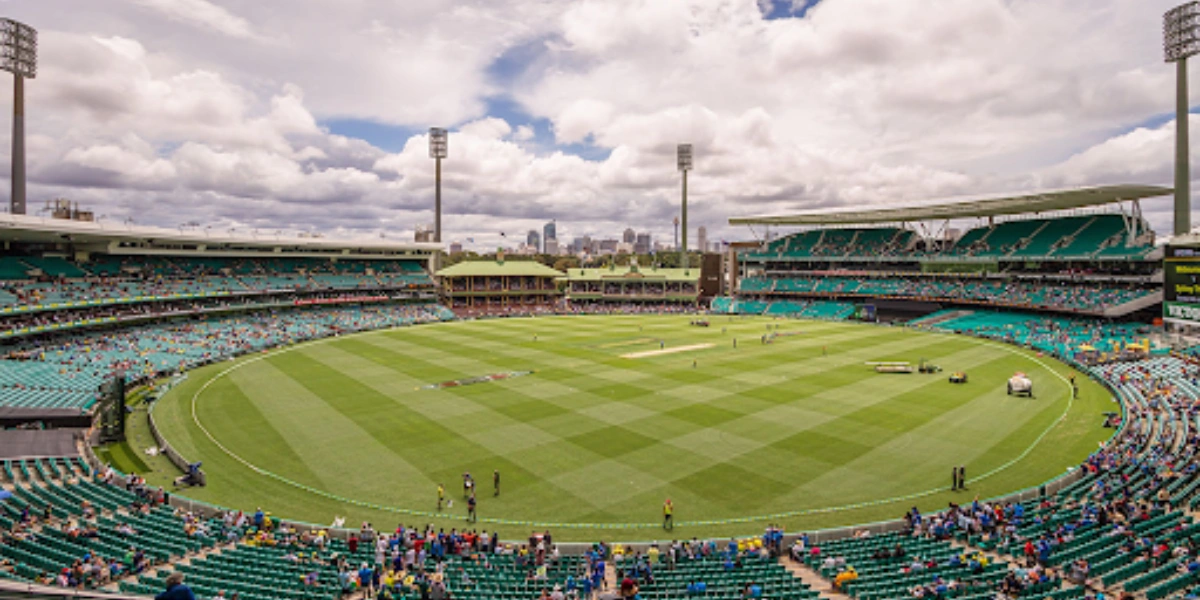Sydney Cricket Ground
Last updated on July 25, 2024 at 14:28 pm
Posted on July 25, 2024 at 14:02 pm
The Sydney Cricket Ground, established in 1851 on former Sydney Common land, has evolved into an iconic sporting destination.
Initially utilized by the British Army as a garden and cricket ground, it underwent several name changes before officially being named the Sydney Cricket Ground in 1894.
The ground saw significant upgrades over the years, including the construction of the first grandstands in 1882 and the introduction of the iconic Hill Stand in 1894.
Hosting various sporting events and witnessing historic matches, the Sydney Cricket Ground holds a special place in Australian sports history, evolving into the iconic venue it is today.
Construction
The construction phase of the Sydney Cricket Ground encompassed a significant investment in terms of cost, with various stands and facilities being erected over time.
These construction endeavors had a lasting impact on the overall infrastructure and spectator experience of the ground, shaping its identity as a premier sporting venue.
The opening of new stands and facilities marked key milestones in the evolution of the Sydney Cricket Ground into the iconic sporting arena it is today.
Cost
With regards to the construction of the Sydney Cricket Ground, the financial investment and costs associated with its development have played a significant role in shaping the iconic sporting venue.
The original construction cost of the Sydney Cricket Ground in the 19th century was estimated to be around £1,600, a substantial amount for that era.
Over the years, numerous renovations and additions have been made to the SCG, with the modernization and redevelopment projects costing millions of dollars.
The recent integration of stands like the M.A. Noble, Bradman, and Dally Messenger stands in 2013-2014 involved a significant financial outlay, showcasing the continuous investment in maintaining and improving the historic ground.
Impacts
Significant changes in the structural landscape of the Sydney Cricket Ground due to ongoing construction projects have had a profound impact on its overall functionality and appeal as a premier sporting venue.
The integration of stands like M.A. Noble, Bradman, and Dally Messenger in 2013-2014, along with the construction of the Bill O’Reilly Stand in 1984, have not only increased seating capacity but also modernized the facilities.
The redevelopment of the Victor Trumper Stand in 2007-2008 and the completion of the Clive Churchill Stand in 1986 have further enhanced the spectator experience.
Continuous upgrades, such as the replacement of the electronic scoreboard in 1999 and the installation of new video screens, demonstrate the commitment to maintaining the SCG’s status as an iconic sporting destination.
Opening
Commencing the culmination of meticulous planning and precise execution, the inauguration of the construction phase marked a pivotal moment in the evolution of the Sydney Cricket Ground’s infrastructure.
The groundbreaking ceremony witnessed by distinguished guests and sporting enthusiasts signaled the beginning of a transformative era for the iconic venue.
Skilled laborers and engineers worked tirelessly to bring the architectural blueprints to life, laying the foundation for the modernized structures that stand today.
The strategic scheduling and resource management during the construction phase guaranteed timely completion, allowing for the seamless integration of new facilities into the historic grounds.
Development
The evolution of the Sydney Cricket Ground through meticulous infrastructure developments and strategic redevelopments over the years has solidified its status as a premier sporting venue in Australia. Various stands such as the Brewongle Stand, Members Stand, Bob Stand, and Sheridan Stand have been integral to enhancing the spectator experience.
The iconic SCG scoreboard, built in 1895-1896, stands as a confirmation to the ground’s rich history. Continuous improvements, including the addition of facilities like refreshment stalls and floodlights, have kept the SCG at the forefront of modern sporting venues.
Recent developments, such as the integration of the M.A. Noble, Bradman, and Dally Messenger stands in 2013-2014, showcase a commitment to preserving heritage while embracing innovation.
Ownership
Control of the iconic Sydney Cricket Ground is vested in the Sydney Cricket Ground Trust, overseeing its operations and strategic development. The ownership structure guarantees the preservation of the ground’s heritage while facilitating modern enhancements.
Key points regarding the ownership of the Sydney Cricket Ground include:
Trust Management: The Sydney Cricket Ground Trust comprises individuals appointed by the New South Wales Government to manage the venue’s affairs and maintain its status as a premier sporting arena.
Collaborative Governance: The Trust collaborates with various stakeholders, including sporting organizations, government bodies, and community representatives, to ensure the ground’s continued success and relevance.
Heritage Protection: Ownership by the Trust ensures that the historical significance of the Sydney Cricket Ground is respected through careful preservation efforts and strategic development initiatives.
Australian Rules Football
Australian Rules Football at the Sydney Cricket Ground has played a significant role in diversifying the venue’s sporting calendar and attracting a broader range of spectators. The sport has a rich history at the ground, with matches drawing in enthusiastic crowds. Here is a breakdown of Australian Rules Football at the Sydney Cricket Ground:

